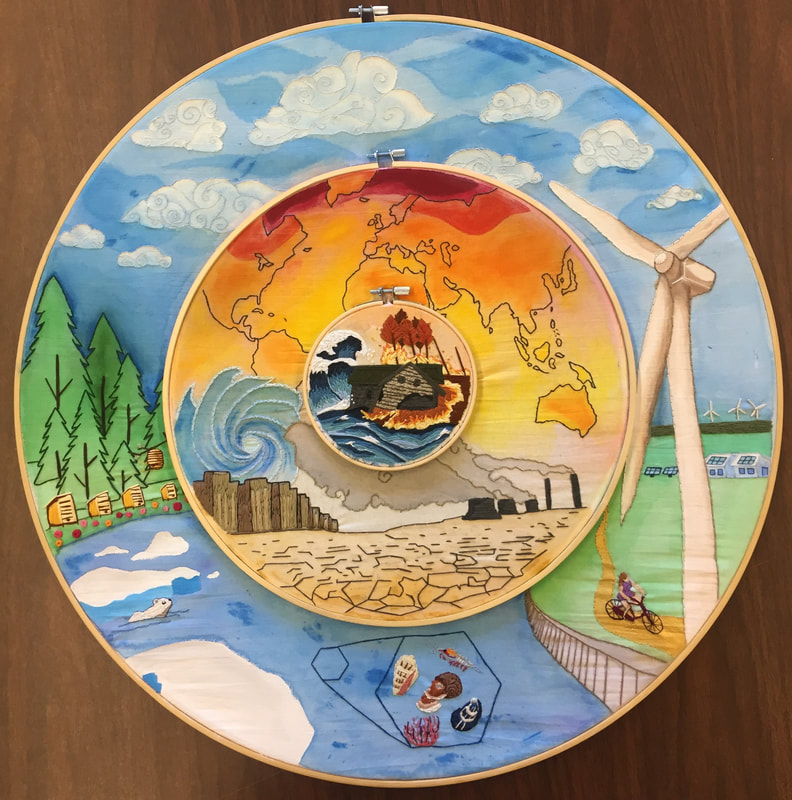|
So happy to announce my first publication which has been accepted to the AGU journal Earth's Future! Now that I understand the process a bit better, I hope this will be the first of many more.
0 Comments
“Will it rain during my cookout this weekend?” “Will it be cloudy during my photoshoot at the beach?” “Will the snowstorm up north cancel my flight?” As a meteorologist I get many forecasting questions, but as a climatologist I only get one, “How screwed are we?” My answer to this is always the same, “that depends on all of us.” I don’t have a crystal ball that sees into the future, but I can tell you that through evidence, we see clear effects from human influences on the climate. IPCC projections of our planet’s future are rooted in observational evidence, researched through a collaboration of scientists, and branches into Representative Concentration Pathways (RCPs). These scenarios incorporate physical systems and dynamics, population growth, economic change, policy change, and provide a baseline for understanding the future we are creating right now. The inspiration for this project came from The Divine Comedy, in which the poet Virgil guides Dante through circles of heaven, purgatory, and hell. It’s a story about consequences, good and bad, and a reminder that we are responsible for our actions while we are here on earth. RCP 2.6 (Outer Hoop) A renewable energy plan and declining emissions after 2020. It’s important to note that even in this best-case scenario, recovery is slow for ocean acidification. RCP 4.5 (Middle Hoop) Emissions peak and begin to decline after 2050. This includes some nuclear power and renewables, but global temperatures are still increasing steadily. RCP 8.5 (Inner Hoop) The inner hoop depicts our, “business as usual” scenario, RCP8.5, where we stay on the current trajectory of greenhouse gas emissions. Some markers are sea level rise, wildfires, and high population growth. Reference: IPCC AR5 Report "In “Spheres of Heaven and Hell”, Alison Banks uses hand embroidery and paint to illustrate three projections from the Intergovernmental Panel on Climate Change (IPCC). Inspired by Dante’s formulation of hell, in which the afterlife’s realms are organized as a series of concentric circles, Banks’ shows us three potential climate scenarios sewn into three stacked embroidery hoops: the outer hoop depicts human civilization’s best-case scenario, where greenhouse gas emissions decline beginning in 2020; the middle hoop shows what life might look like if emissions begin declining in 2050; and the inner hoop, the most hellish, shows a world set ablaze by humans’ current and unchecked emissions. While Dante’s original inferno consists of 9 circles, Banks’ shows 3, emphasizing the proximity of climate change’s disastrous consequences. Indeed, the inner circle might be the smallest, but it stands out like an irrefutable, fearsome, and maybe galvanizing, bulls-eye, dead center. In the face of all this future-thinking, the judges appreciate the artwork's blatant objecthood: it's big, obviously, but the embroidered sea creatures, multi-colored woven roses, and unexpected shimmer of golden strings show an artist who is thoughtful about the detail this traditional handcraft allows."
- Written by contest judge Ariel Ackerly UGA Capturing Science Link As it often happens on a summer afternoon, you may find yourself going for a stroll in the park just to enjoy the scenery and sunshine. As you approach the fountain, you see a group of people standing around and looking down at their phones. Though they are in a tight group, none of them are communicating with each other.
Chances are you’ve just found your local Pokémon Go players. ... Given a map of your area, could you indicate where the historical family plots, churchyards, and cemeteries reside? MSGIC’s very own Ashley Samonisky could, with her comprehensive map of grave-sites in Dorchester County. After over six months of data collection in the field, she presented her findings at the Robbins Heritage Center in Cambridge this week.
The project began when she was inspired by her grandmother to research her own family history. Starting with local records, and using a combination of USGS markers and GPS, she began to document the locations of grave-sites in the county. However, this proved to be a much larger challenge, since many of the previously recorded sites were grown over, worn down, or in flood zones. ... |










 RSS Feed
RSS Feed